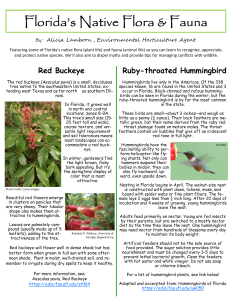Featuring some of Florida’s native flora (plant life) and fauna (animal life) so you can learn to recognize, appreciate, and protect native species.

Aesculus pavia, Red Buckeye https://edis.ifas.ufl.edu/st064
Hummingbirds of Florida https://edis.ifas.ufl.edu/uw059
 0
0
